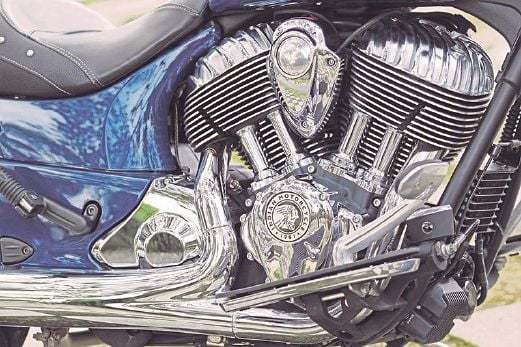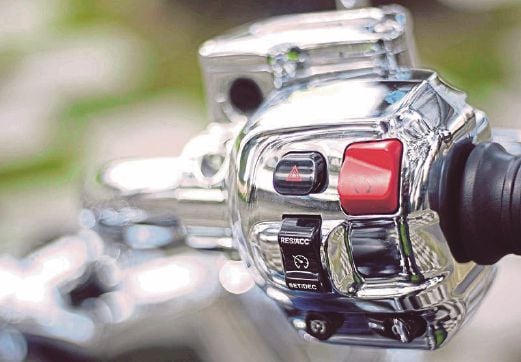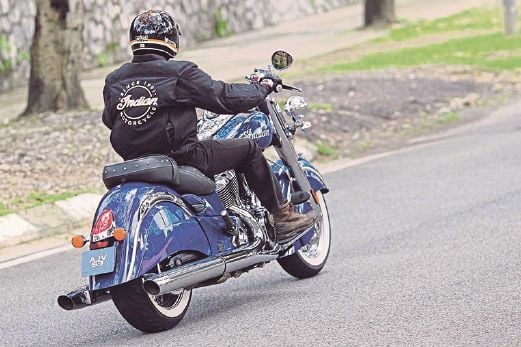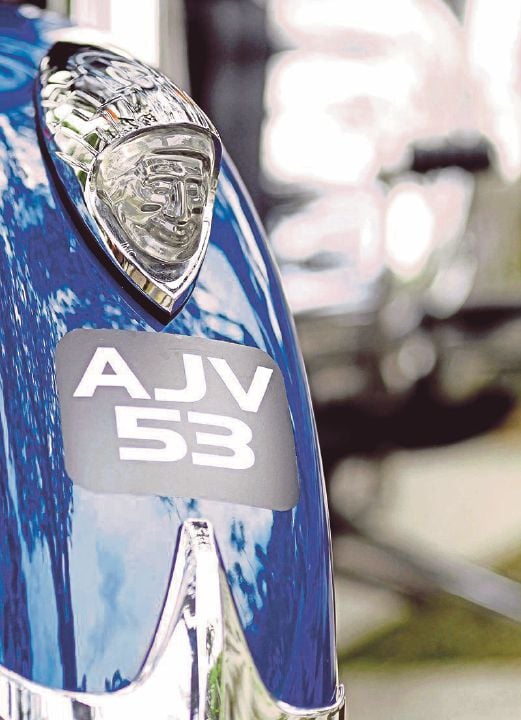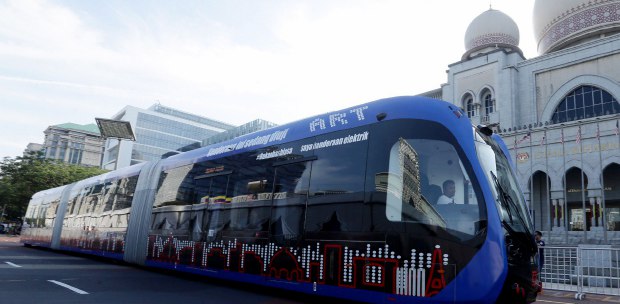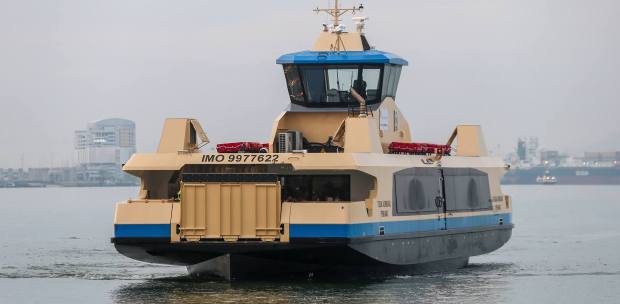THE “War Bonnet” on the voluptuous front fender of the Indian Chief has seen a lot of history. It has seen Indian rise to become the premier American “Motocycle” (that was how Indian spelt it), numerous race victories, post-war disaster when the company went under, several abortive rebirths and finally, Polaris’ purchase of Indian in 2011 and the subsequent successful line-up we see now.
George Hendee would be proud of the Chief. A louder and prouder machine would be hard to find. The Chief sports acres of chrome and paint and attracts eyes wherever he goes. Even the quite plain Blue is still deep and lustrous enough to make a Harley owner green with envy. The Chief is styled after its namesake built in the 1940s and it is surprisingly true to the original. Despite the modern underpinnings, this Chief could easily have rolled off the 1942 Indian production line, if you squint a little.
There is no denying that the styling is what makes the Chief what it is, but do the skirted fenders, floorboards, huge V-Twin and upholstered saddle make it a good motorcycle?
Straddling the low 26-inch (66cm) saddle and lifting it off the sidestand reveals it has some heft, 357kg to be exact. But it sits well balanced on its fat 16-inch (40cm) wheels (60 spoke wheels, to be exact) while you suss out the starting procedure. The Chief has a Power button, somewhat like a PC, you see. That’s because the Chief has a keyless system. So, to switch it on and off, you press the big red power button, then press the starter button. In any case, it’s important to NOT be like Harley-Davidson. The rivalry continues even now. The Indian never forgets that the tomahawk was NEVER buried.
The analog tachometer and speedometer in the centre console (look down) has a digital multi-function display, with the usual warning lights. It is always advisable to wear an open-face helmet as the whole shebang is obscured by the chinbar of your full-face helmet. The handlebars are swept back towards you and the floorboards are an easy reach. You are seated quite like on the comfy leather couches of the Hilton cigar lounge. Very comfortable.
Into first and release the smooth clutch and the Chief thumps you forwards easily. Indian does not release horsepower figures, only torque figures, and the Chief produces 161.6 Nm of it and at only 3000rpm. The triple-cam, 111 cubic inch (1,811 cc) V-twin “Thunder Stroke” engine is a powerhouse, for sure. To keep the nice parallel look of the pushrod tubes, three cams operate the four-pushrod valvetrain, again, quite unlike Harley’s pushrod tubes.
The dual exhaust is separate and the acoustically-engineered system delivers the low rumble of the V-twin by eliminating any high-pitched sounds. The six-speed transmission has a positive neutral find and sixth gear is actually overdrive, which means cruising is seemingly effortless, doing 45mph (72kph) at 1,700rpm with a whole lot of low-to-mid range torque.
Very surprisingly, the Chief never fumbles at slow speeds. It carries its weight well, and easily, making U-turns and turns easily and effortlessly. You do have to keep in mind it is a heavy and long bike, so parking is the only bugbear you may have. It does NOT look cool trying to paddle the Chief backwards. In faster corners, the Chief does not disappoint, sparking its floorboards anywhere and everywhere if you so wish. But a more stately and regal behaviour is more befitting a Chief, so progress is best made at a more steady pace. It is more than a match for any other cruiser out there, thanks to large 46mm forks with 4.7 inches (12cm) of travel and a single rear adjustable pneumatic shock with 3.7 inches (9.3cm) of travel. The original Chief never handled this well, I gather.
On the braking front, dual four-piston calipers in the front and a twin-piston caliper on the rear are hidden behind painted-to-match brake covers that blend right in with the fenders. All are 300mm discs with ABS, so you have ample stopping power.
The Chief is more than willing to do anything, but its size makes it a frustrating commuter. It is best to stay on the highways and keep city forays limited. That said, the Chief never loses its cool and will cope with extended idling and traffic jams. On the open road, it excels. The riding position and comfy seat will allow extended tours, and the 20.8 litre fuel tank and sixth speed overdrive will be your allies. An accessory fairing from Indian will push the average speed up more.
There are more accessories available, among them the “Thunder Stroke” Stage 1 fishtail exhaust system (a must-have) and a high-flow air cleaner. Then there’s the ape-hangers.
There are plenty more in the Indian range if you prefer baggers, tourers and such. Check out the full range at Harmony Fabulous Sdn Bhd, at Naza World in Petaling Jaya. Say “How” to them for me, kemosabe.



